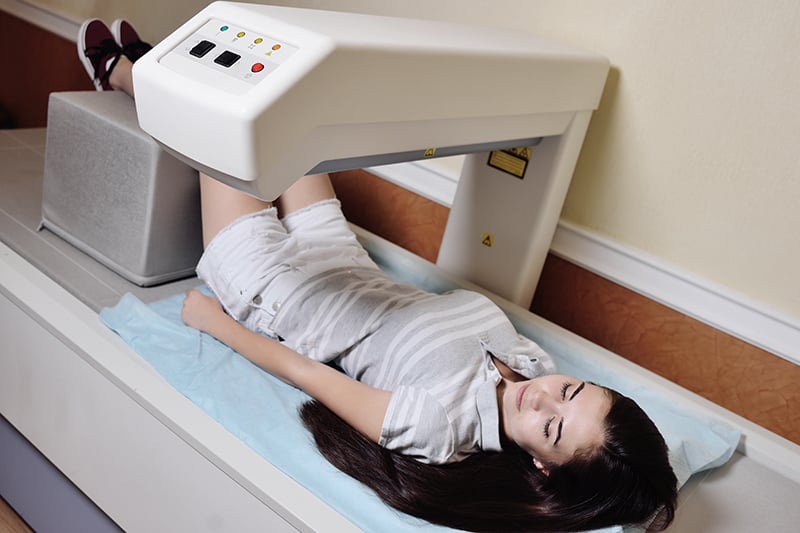The DXA Scan machine is a device used to measure bone density using low-energy X-rays with two energy levels for the examination. Individuals subjected to this test will receive a small amount of radiation, which is less than the amount received from a regular chest X-ray. It is a clear, accurate method that has been established as the standard procedure for diagnosing osteoporosis by the World Health Organization (WHO).
Types of Bone Density Scanners
There are 2 types of DXA Scan machines:
- Central Device is used to examine the spine and hips, which is the standard method for diagnosis.
- Peripheral Device is used to examine areas like the wrist and ankle, used for screening purposes.
Interpreting the Results
The measured bone density results are given in mass/bone area (g/sq. cm, grams/square centimeter). For accurate diagnosis, these values have to be compared with the average values of a healthy young adult population aged 30 – 40 of the same or similar ethnicity. This difference in numbers is measured in standard deviations, known as the T-score (T), which is used for diagnosing diseases:
- A T-score higher than -1 is considered normal bone density.
- A T-score between -1 and -2.5 indicates thinning bones (Osteopenia).
- A T-score lower than -2.5 indicates osteoporosis.
To monitor changes in bone density, it is advisable to use the same DXA scanner since different machines may have varying measurement technologies, reference values, and measurement variability, which can make comparing results unreliable. Generally, bone density should not be measured more frequently than once a year, as the difference within a shorter period might be too minor for accurate interpretation.

Who Should Regularly Get Bone Density Tested
- Women aged 65 and above, and men aged 70 and above
- Women who went through menopause before the age of 45
- Postmenopausal women with a body mass index lower than 19
- Those with a family history of osteoporosis or have had fractures due to the disease
- History of hip fractures, spinal fractures, or other fractures from minor injuries
- Postmenopausal women and men over the age of 50 who have lost more than 3 cm in height
- Heavy smokers or drinkers
- Individuals with diabetes, chronic liver disease, chronic kidney disease, chronic arthritis, gastrointestinal malabsorption disorders, chronic inflammatory bowel disease
- Individuals with thyroid or parathyroid disease
- Men over age 50 with symptoms of low male hormones
- Postmenopausal women with breast cancer and men over the age of 50 with prostate cancer
- Those taking certain medications, such as steroids, thyroid medications, epilepsy drugs, cancer treatments, etc.
Preparation Before the Exam
- Notify the doctor or radiologic technologist if you suspect pregnancy, as the exam is not performed on pregnant women.
- Consult with the doctor if you have recently ingested barium or had a contrast dye for a CT scan, which might require postponing the DXA scan for about 2 weeks.
- You can eat and drink normally on the day of the exam.
Undergoing a DXA Scan
Change into the gown provided, remove any metal objects from your body, and lie down on the scanning machine. The scan takes about 10 – 15 minutes.
